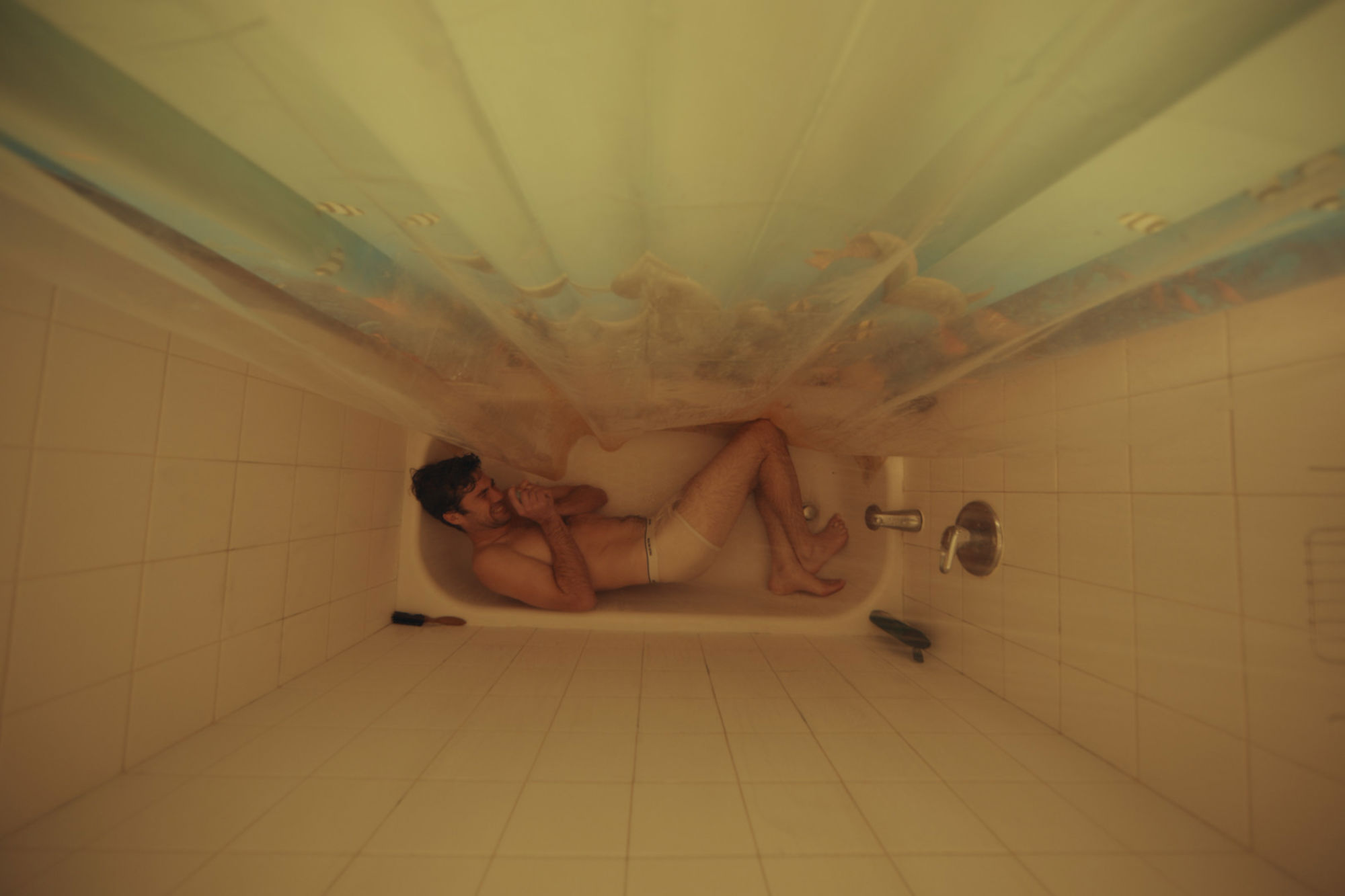
On the surface Ariel Zengotita’s darkly comedic body horror Flick may seem little immature. Man picks booger. Booger terrorises man. It’s in this strange cycle, however, that the film’s real themes emerge. Anxiety. Obsessive thinking. Psychological descent. Zengotita’s short is about so much more than a silly gag, it’s about those declining cycles we sometimes find ourselves in when things aren’t going exactly how we’d like them too. One of our favourite shorts from Encounters last year, DN caught up with Zengotita for a conversation on the making of his short, its high school genesis, and embracing practical effects in body horror.
Dare I ask where the idea for Flick came from?
Like most people, I have some habits that I’m not too proud of… I pick my nose. I’ve been doing it ever since I was a little kid. Usually, I just flick them off and hope they simply vanish into thin air, but a part of me knows they land on the ground somewhere (I vacuum frequently). In my years of picking and flicking, I’ve had to deal with a number of boogers that simply refused to be flicked off, almost as if in willful defiance. It can be a very frustrating experience that I’m sure many people can relate to. These stickers usually just end up having to be forcefully rubbed off on something, whether it be a tissue paper or the bottom of a chair. But what if that didn’t work? What if, no matter what you tried, the booger wouldn’t budge? What if it really did have a will of its own? And that’s the kind of thinking that led to Flick.
I actually let this idea gestate for a number of years before finally sitting down to write it. When I first came up with it, I was barely out of high school, hence the stupidity of the concept. But revisiting it as a more fully formed human being, I approached it from a new angle – how could I make this silly gag meaningful to me, or anyone else who watches it? And as I continued to develop the story, the answer became evident.
In my years of picking and flicking, I’ve had to deal with a number of boogers that simply refused to be flicked off, almost as if in willful defiance.
What galvanised the idea’s shift from gag concept to a script which had something to say on a deeper level? What lead Flick from concept to script?
A few years ago I experienced a kind of nervous breakdown, entirely unrelated to boogers, and was diagnosed with general anxiety disorder, something I didn’t even know existed at the time. Anxiety disorders affect 40 million people in the United States or roughly 18% of the population. If you’re someone who falls into that category, then you know what it’s like to get trapped in a hellish loop of obsessive thinking – it can feel like there’s something, whether it be a distressing thought, person, or memory, that’s stuck to you like glue. No matter how hard you try, you can’t shake it off.
While writing Flick, I began to see the booger as more than just a stubborn little snot with legs; it became a parallel to my own experiences with prolonged rumination. For chronic worriers, often you’ll discover that even if the issue causing your torment is resolved, your worry will just find something else to latch onto. In the words of C.H. Spurgeon, “Desponding people can find reason for fear where no fear is.” When Flick starts out, Richie, the protagonist, is avoiding the things that he believes cause him stress – school, his mother, the outside world – but even in isolation, he finds something to worry about. I wanted to tell this story as a way of expressing that feeling, but also have it serve as a cautionary tale against self-destructive (and just plain gross) habits.
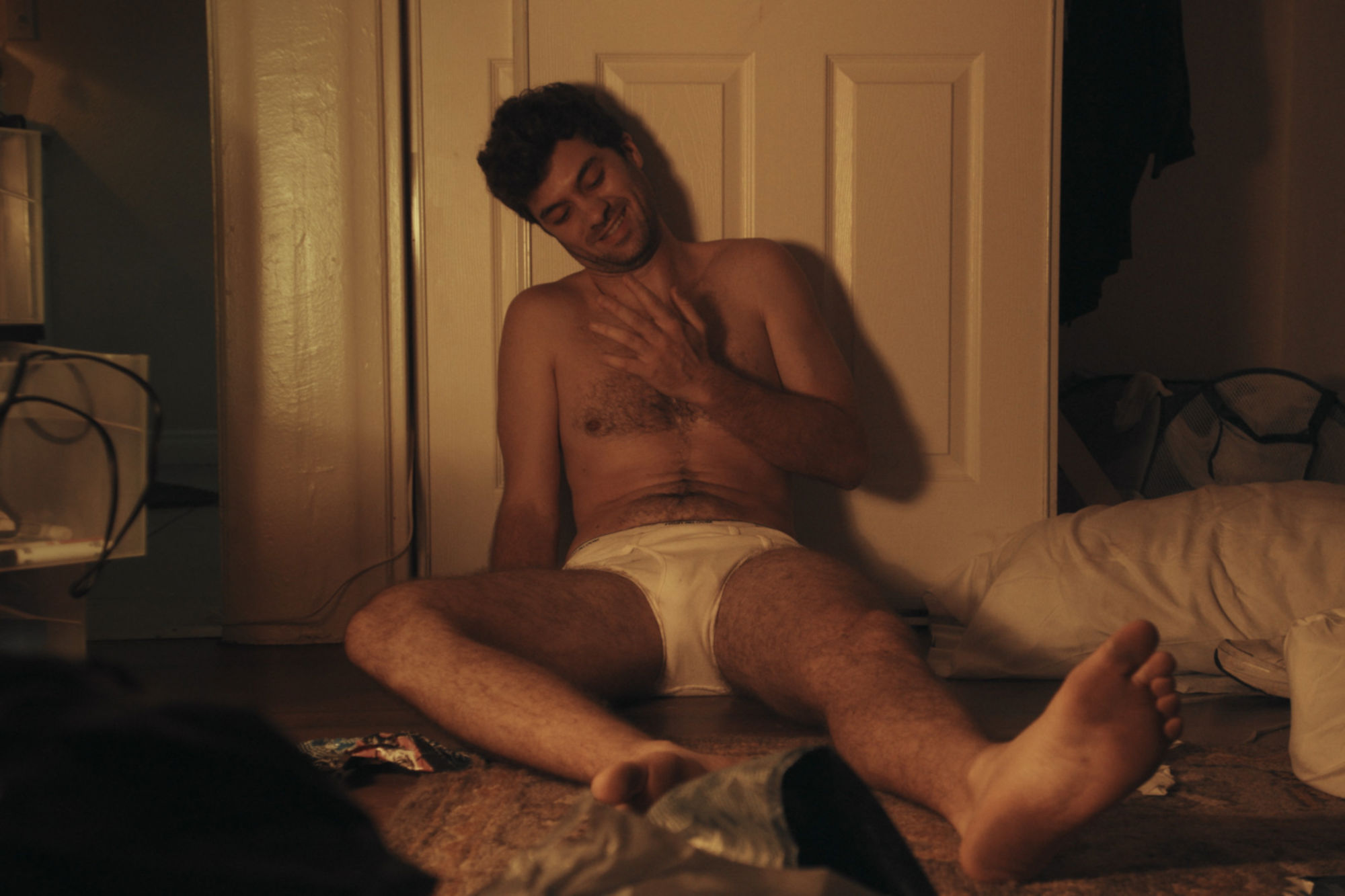
Given the gross-out nature of the film, how did you seek to balance the comedic elements at play with that dramatic underpinning?
Going into pre-production, I was mindful of the fact that this film could easily veer into the stupid comedy territory when my goal was to make more of a psychological thriller/character study. But at the same time, I didn’t want the film to be overly dark, and I did want people to be able to have fun watching it. In order to achieve that balance, firstly, the most important thing was to cast an actor that could somehow find truth in this ridiculous scenario. At the end of the day, Flick is a one-man-show and its success lives or dies in the actor’s performance.
He had a natural way of being funny while taking things very seriously.
When I first saw Nate Pringle audition, all hope was lost for my other candidates. The audition sides were really weird, but Nate fully committed himself and just put it all out there, tackling extreme emotions with a kind of honesty I didn’t see in anyone else. Not only that, but his physicality was just fascinating to watch, which was very important for the part. When I started having meetings with Nate and getting to know him better, I learned that he was actually a comedian, although he was pursuing dramatic roles in acting. This was just perfect since he had a natural way of being funny while taking things very seriously. Coincidentally, he had also gone through a pretty severe nervous breakdown at one point in his life and could pull from that experience for the character. We also talked about going slightly method, and so Nate agreed to limit his sleeping hours in order to add to his delirium on set. All this to say, without Nate, there is no Flick.
How intense was the production period?
Flick was a passion project for both my cinematographer, Tu Do, and myself. We both saw it as an opportunity to create somewhat of a ‘calling card’ for the kind of work we wanted to do moving forward. We ended up fully funding the film ourselves (never again), and had to limit our production timeline to just one weekend in order to save on rental costs. The days were long and intense, and the apartment was a cramped and cluttered mess. At times it felt like we were all losing our minds along with the character, but I was blessed to have a cast and crew of immensely talented and hard-working people who persevered through the worst of it.

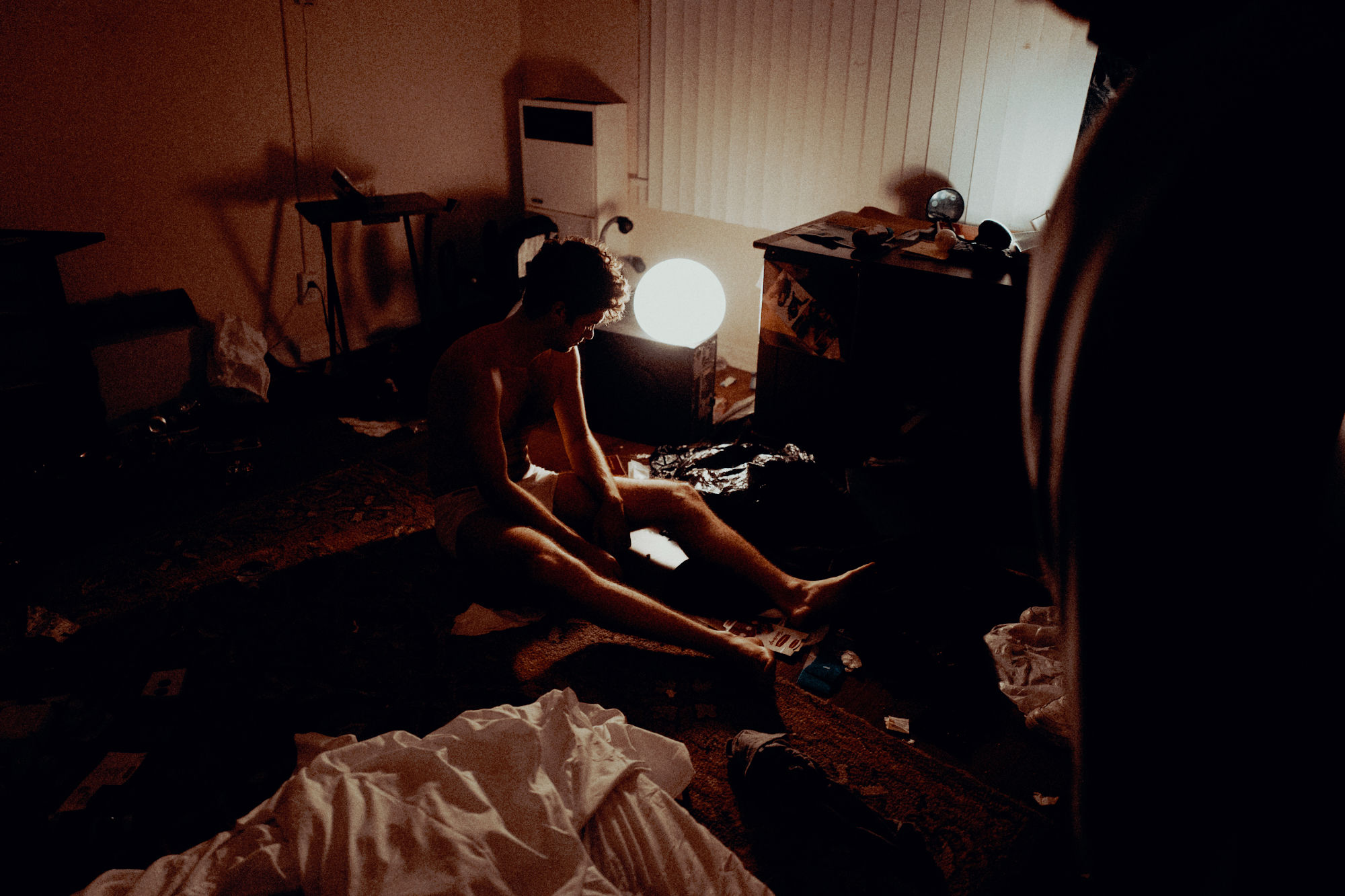


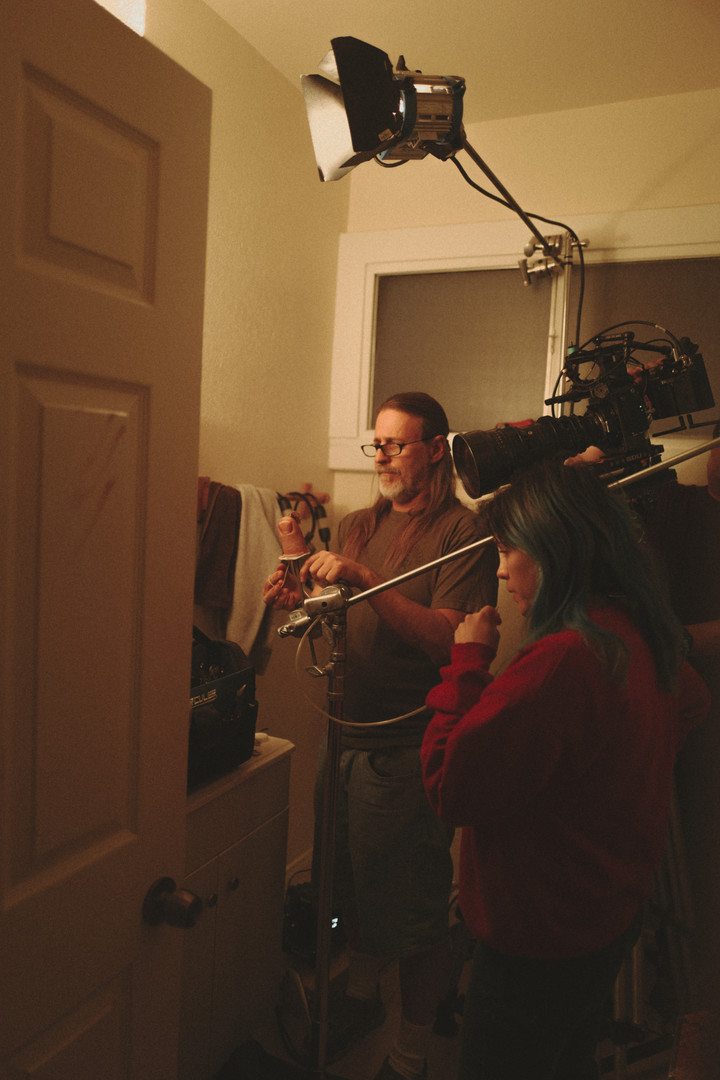
How did you work with Tu Do on developing the aesthetic of Flick? It’s got a filmic, almost distorted look to it.
From a production standpoint, again, it was never my goal to make a comedy. I wanted the audience to feel the psychological pain that Nate’s character was going through, even though the scenario might be laughable on the surface. Everything from shot composition and art design, to camera and lens choice was made to serve the theme of the film.
Early on there was a hope to shoot Flick on 35mm film, but due to the small size of our location and the kinds of shots we wanted to achieve, film just wasn’t a possibility. We decided to shoot digitally using the Sony Venice, which ended up being instrumental in creating the look we wanted. As Richie devolves into madness, we wanted the camera to reflect his warped perspective, both in the lenses we chose and in its unrestrained movement. Using the Rialto extension unit, we were able to detach the camera sensor from its body and handle it almost like a DSLR. This allowed us to fit the camera into tight spaces, or even place the body in a backpack while Tu freely whipped the sensor around for our handheld sequences. We used vintage Canon FD Prime lenses and a Cooke 18-100mm zoom to give the film a slightly retro and distorted aesthetic, emphasising the psychological tension while also paying homage to the kinds of films that influenced us.
I’m a huge proponent of practical effects, especially when it comes to body horror.
To get the filmic look we wanted, we sent the final picture-locked edit to Fotokem and had them transfer it onto actual 35mm Kodak film. We made sure to specify that they not clean it up so that all the grain, dust, hairs, etc. would maintain a strong presence. At the end of the day, digital was just too clean of a look for how filthy Flick is.
As far as special effects go, the vast majority of our effects were created practically and shot in-camera. Dan Rebert (special makeup effects designer for James Gunn’s Slither) spearheaded the design and execution of our creature effects and gore. We utilized rod puppets, oversized fingers, and a lot of fluids to realize the abhorrent visuals of mucus and mutilation. I’m a huge proponent of practical effects, especially when it comes to body horror. Although it may come close, CGI can never quite capture the raw complexities, unpredictability, and sheer grossness of the physical world, which is exactly what was needed to drive our story home.
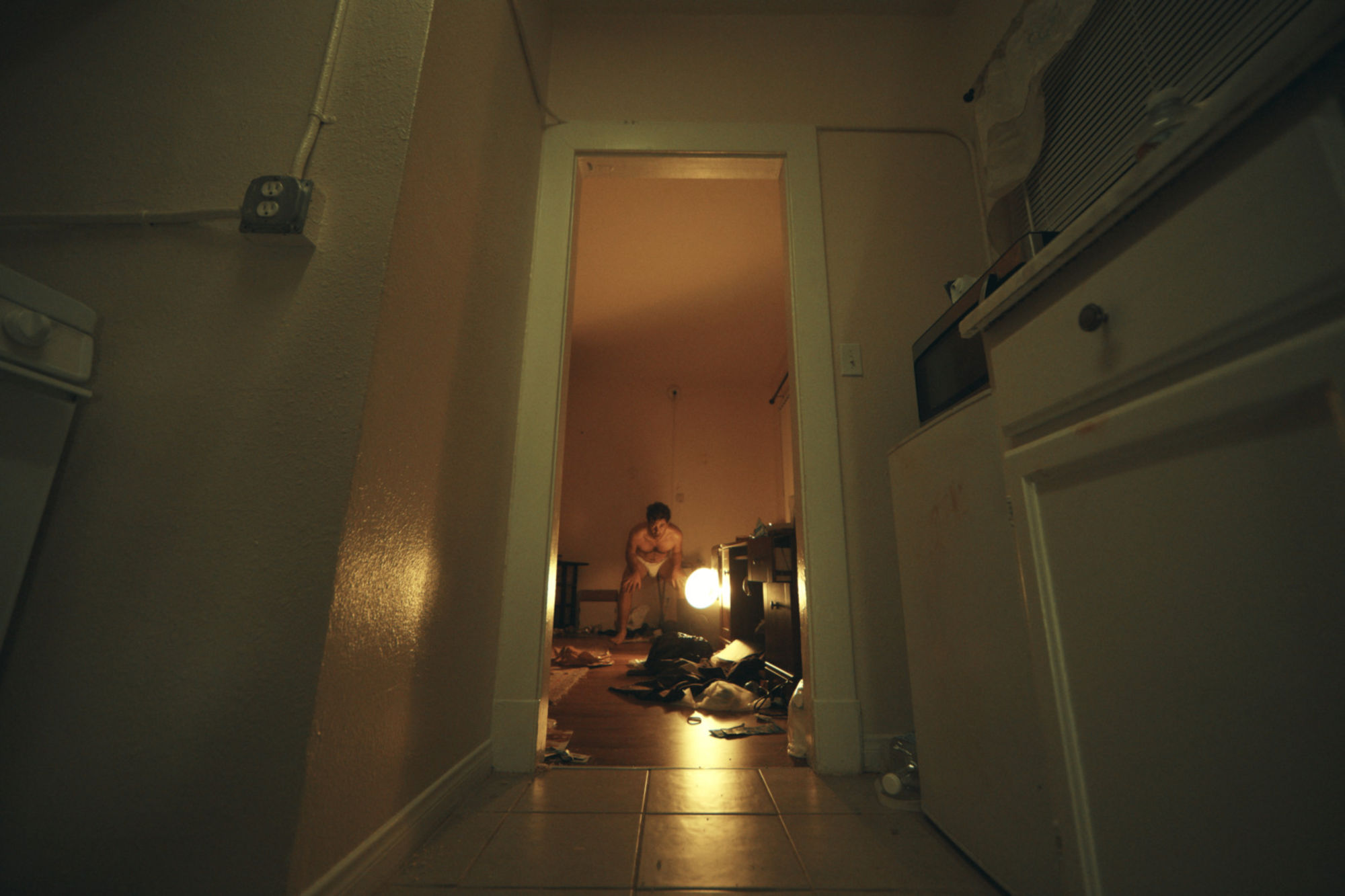
How much of what you captured ended up in Flick? Given the film’s ‘strangeness’, for want of a better word, did you allow any space for improvisation?
I’m not a big fan of shooting coverage so the majority of the shots were carefully planned during pre-production with the edit in mind. The only sequence that was not fully shot-listed/storyboarded was the montage of Richie losing his mind after the “Three days later” title. That was also the only scene that utilised improvisation from an acting standpoint. Tu was alone in the room with Nate for half an hour, both of them just living the scene out while the rest of us watched from a monitor outside in the hall. It was truly a beautiful thing to witness, like watching a dance. There were a few planned moments with breakaway props, but other than that, it was all improvised. So yeah, that was the most challenging scene to edit since everything else was pretty clearly laid out.
Although most of our special effects were created practically in-camera, there were still certain elements that needed to be touched up using visual effects. For instance, we couldn’t actually burn the room down since we shot in a real apartment building versus a set. All the fire you see in the film was added in digitally. Also, we did utilise a small amount of rod/wire puppetry, and so the rods and wires had to be painted out. Other than that, everything you see is practical.
Musically, what were you looking to get across?
I was able to work with music duo Jack Sobo and Jon Sevvitz of Dummy to set a unique tone for the film. For a number of reasons, I see Flick as a kind of ‘anti-kaiju’ film. In the monster movie that Richie’s watching, Gamera (the giant turtle) is seen roaring and causing destruction at a power plant. The creature’s behaviour mirrors Richie’s as he screams and wreaks havoc on his own apartment. Also, the booger tick is basically the exact opposite of a kaiju in size, yet just as destructive to Richie’s life as Godzilla was to Tokyo.
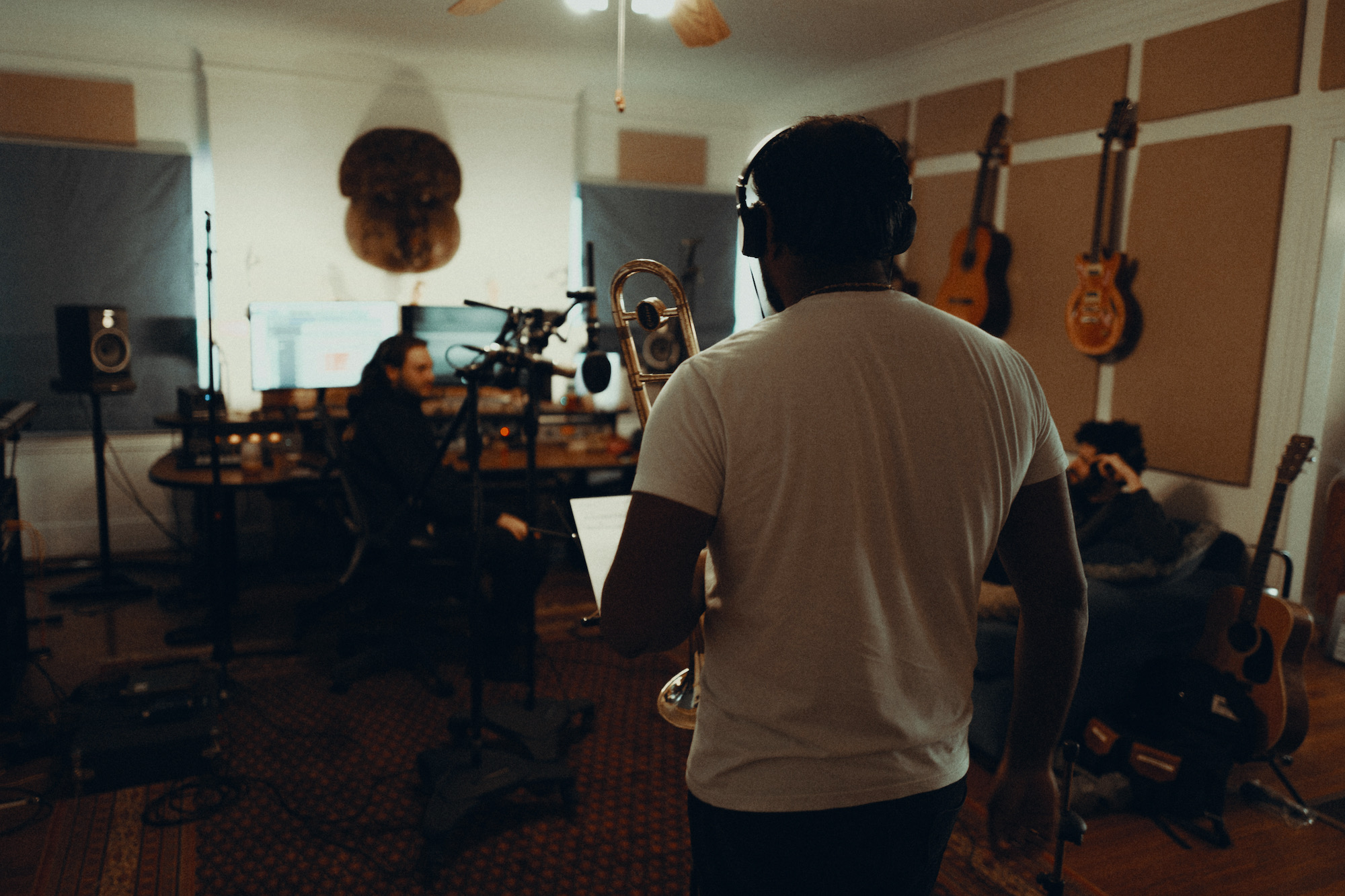

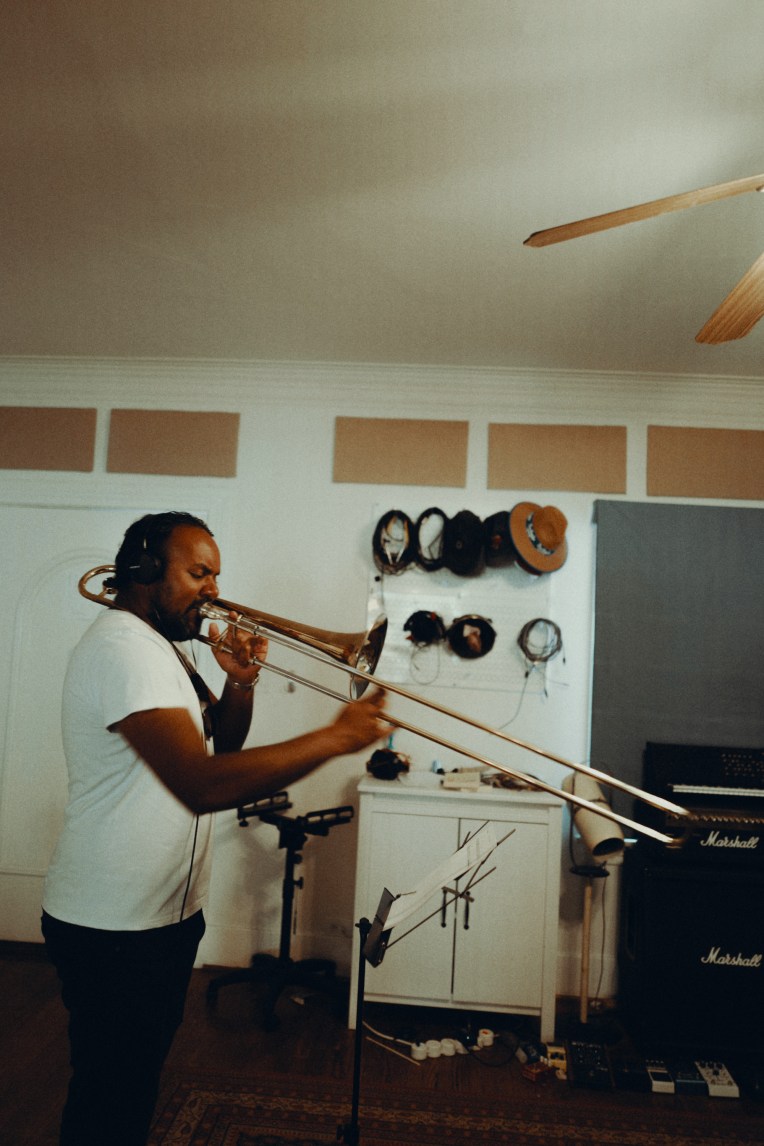

Jack and I wanted to go further by also referencing kaiju movie soundtracks with the score. He and Jon avoided using synths and electronic sounds in favor of real instruments, honing in on deeper brass and woodwinds akin to those of Akira Ifukube’s iconic scores. Another huge inspiration for Jack and Jon was the music of Jerry Goldsmith. Jack had the idea of making the score sound like it was performed by a bizarre little chamber group rather than a big orchestra, which made it feel like this band was trapped in the space with Richie. There’s also an element of jazz present that I think reflects the freeform nature of Richie’s journey through the film.
What projects do you have on the horizon?
I’m currently writing a short about a man driven insane by his never-ending search for Bigfoot. It’s a psychological dark comedy that will hopefully also serve as a proof-of-concept for a feature based on the same premise. I have a few other short scripts I’d love to get the ball rolling on as well – the loglines generally read, “A man is driven insane by _____.”


